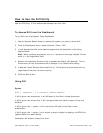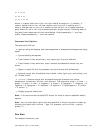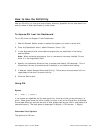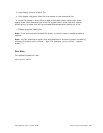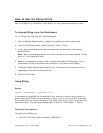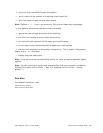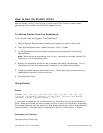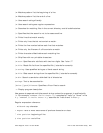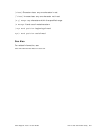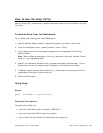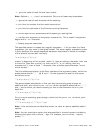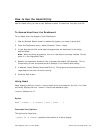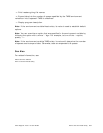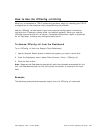Cisco Support Tools 1.0 User Guide How to Use the Findstr Utility 226
/B: Matches pattern if at the beginning of a line.
/E: Matches pattern if at the end of a line.
/L: Uses search strings literally.
/R: Uses search strings as regular expressions.
/S: Searches for matching files in the current directory and all subdirectories.
/I: Specifies that the search is not to be case-sensitive.
/X: Prints lines that match exactly.
/V: Prints only lines that do not contain a match.
/N: Prints the line number before each line that matches.
/M: Prints only the filename if a file contains a match.
/O: Prints character offset before each matching line.
/P: Skip files with non-printable characters
/A:attr: Specifies color attribute with two hex digits. See "color /?"
/F:file: Reads file list from the specified file (/ stands for console).
/C:string: Uses specified string as a literal search string.
/G:file: Gets search strings from the specified file (/ stands for console).
/D:dir: Search a semicolon delimited list of directories
strings: Text to be searched for.
[drive:][path]filename: Specifies a file or files to search.
-?: Display program description.
Use spaces to separate multiple search strings unless the argument is prefixed with
/C. For example, 'FINDSTR "hello there" x.y' searches for "hello" or "there" in file
x.y. 'FINDSTR /C:"hello there" x.y' searches for "hello there" in file x.y.
Regular expression reference:
. Wildcard: any character
* Repeat: zero or more occurrence of previous character or class
^ Line position: beginning of line
$ Line position: end of line



